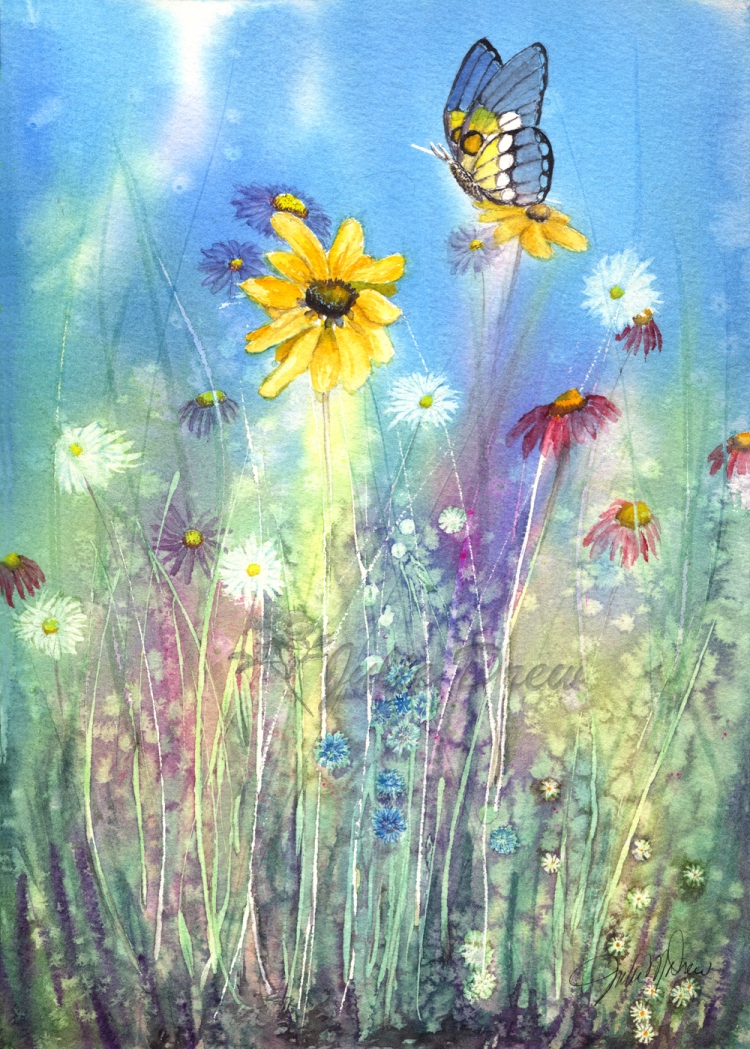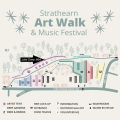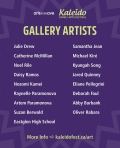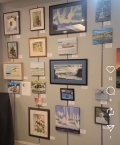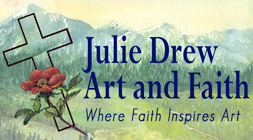 Julie Drew Where Art Meets Faith
Julie Drew Where Art Meets Faith Bloom Where You Are Planted
I love wildflowers – maybe because no one planted them and they are just there to be. I am thrilled to come across fields of them when hiking. I look for them on the forest floors. Some are so tiny, they are easy to miss. They are not usually in cultivated gardens. That would, after all, go against the definition of a wildflower:
a flower of an uncultivated variety or a flower growing freely without human intervention.
Do you know how you are supposed to plant a packet of wildflower seeds – randomly toss the seeds over a designated space of soil and lightly cover with top soil.
Since I planted them – does that make them cultivated and not wild? Is it intervention when I move them back to the part of the garden where I want them to stay?
Wildflowers can be beautiful weeds when they pop up where you don't want them. They are hardy plants that flourish in difficult places. They do not require great care. They are tenacious, they travel and do not stay in one nice uniform place in my garden.
I finished this painting of wildflowers, Bloom Where You Are Planted, (10 x 7 in, watercolor) during the Deep Freeze festival this month. The process of this painting reflects on the subject matter.
Part one - arbitrary, haphazard. (Wildflowers show up wherever there is a bit of dirt – not planted or planned.)
During a watercolor class I was teaching, I started this piece as a demonstration for pouring watercolor. I had a vague plan… I arbitrarily masked out bits of possible flowers and a butterfly. This would save the white of the paper for later. While I waited for it to dry, I prepared three small containers of watery watercolor: green, blue and pink.
I wet down the paper, poured on the paint, threw on some table salt and placed some rock salt at random intervals. Using a bit of hard plastic, I quickly made random strokes for grass lines. I let it dry.
I wanted stronger colors, so I masked out some places I wanted to keep from the first pouring. I prepared three more cups of watery watercolor and poured it on. Salted again and waited for the result.
After it was completely dry, I took off the masking fluid and salt.
Part two – Turning dabs into flowers wherever they show up. (Wildflowers bloom wherever they are. I have found chamomile growing in cracks in the sidewalk.)
This is the stage that I brought to the Deep Freeze festival to work on. Once the masking fluid and salt were removed, I could see the different parts that were saved. Now came the point of turning the random bits of white into the flowers and a butterfly. I looked through some photo refences of wildflowers to get possible ideas for both the flowers and the butterfly. The flowers are asters, daisies, black eyed susans and additional flowers from the ideas of others. The butterfly is a combination of several butterflies.
It is fun to see where it can go. This is a good challenge for me to not have everything figured out ahead of time, as I often try to control too much. It allows me to trust the process, letting the flowers bloom where they fell on the page.
Like the hardy wildflowers that bloom wherever their seeds fall, we too can bloom where we are ‘planted.’ We do not have to always be in control – really. I was thinking of this as I was reading in Jeremiah chapter 29. Jeremiah tells the people in exile to build houses have families… go about life. Don’t live as if your current situation is temporary. Don’t wait to be present until some ‘tomorrow’ comes. They are going to be there for awhile (70 years). He is calling them to bloom where they have been (trans)planted. They need the hardiness of wildflowers to bloom in unfamiliar territory. And through Jeremiah, God promises that he has plans for them.
Bloom. Be. Do what you do. Shine. Make the world a beautiful place.
Wildflowers do that. Can I?
